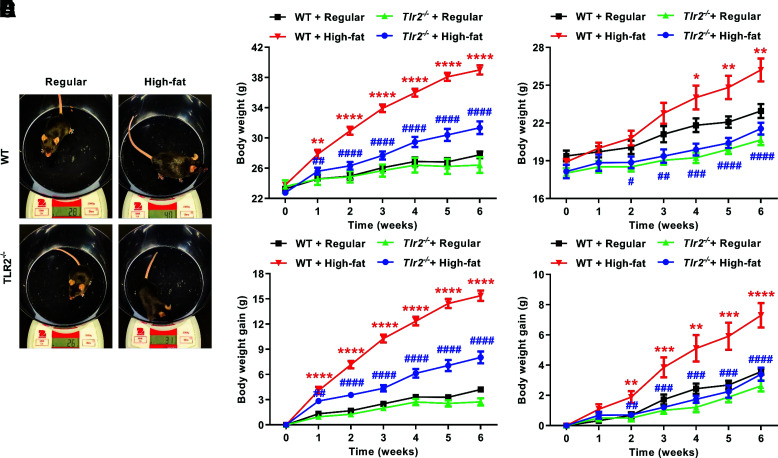Figure 2.
TLR2 KO attenuates high-fat diet feeding–induced increases in body weight and body weight gain. Eight-week-old WT and Tlr2−/− mice were randomly divided into two dietary groups and fed either regular chow or high-fat diet for 6 weeks. Body weight of individual animals was measured weekly until end of the experimental protocol. A: Representative pictures of male WT and Tlr2−/− mice fed with regular chow or high-fat diet for 6 weeks. B: Grouped data of weekly changes in body weight over the 6-week study period in WT and Tlr2−/− male mice fed high-fat diet (n = 7–8). C: Grouped data of weekly body weight gain in WT and Tlr2−/− male mice fed high-fat diet (n = 7–8). D: Grouped data of weekly changes in body weight over the 6-week study period in WT and Tlr2−/− female mice fed high-fat diet (n = 7). E: Grouped data of weekly body weight gain in WT and Tlr2−/− female mice fed high-fat diet (n = 7). Data are shown as mean ± SEM. *P < 0.05, **P < 0.01, ***P < 0.001, ****P < 0.0001 vs. WT + regular chow; #P < 0.05, ##P < 0.01, ###P < 0.001, ####P < 0.0001 vs. WT + high-fat diet.

